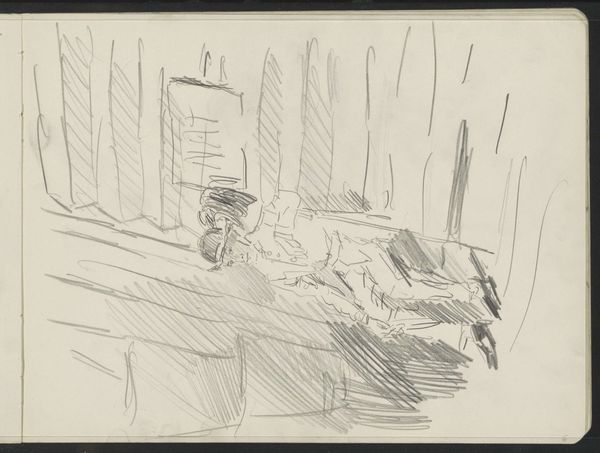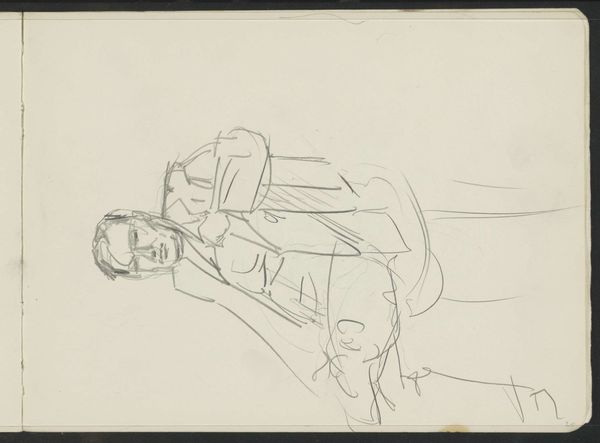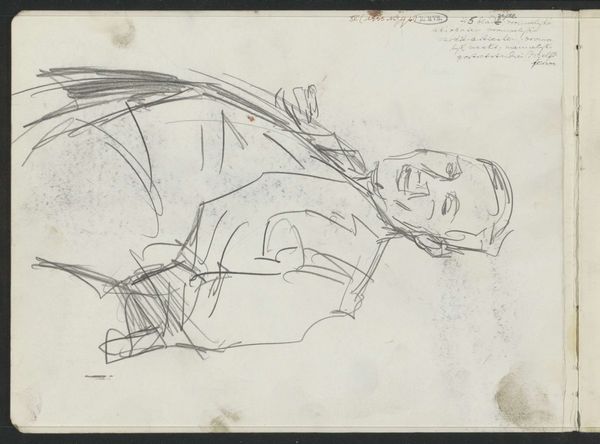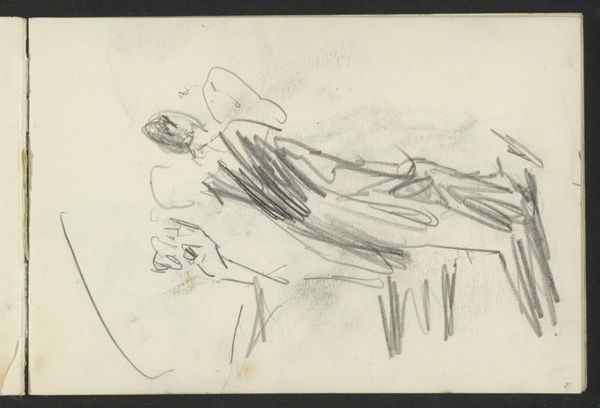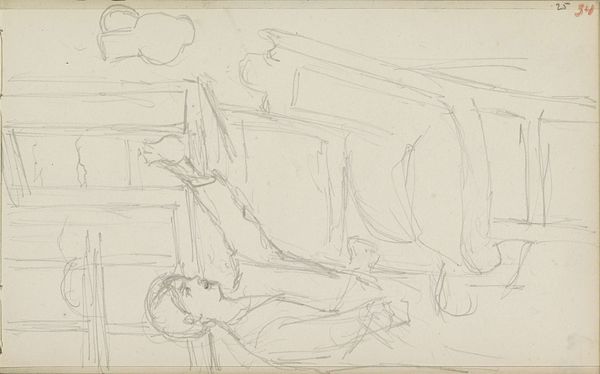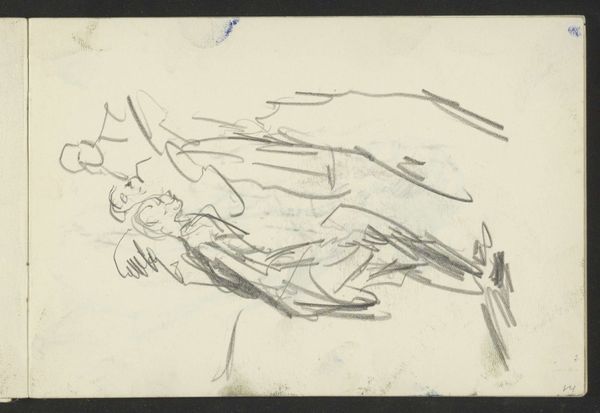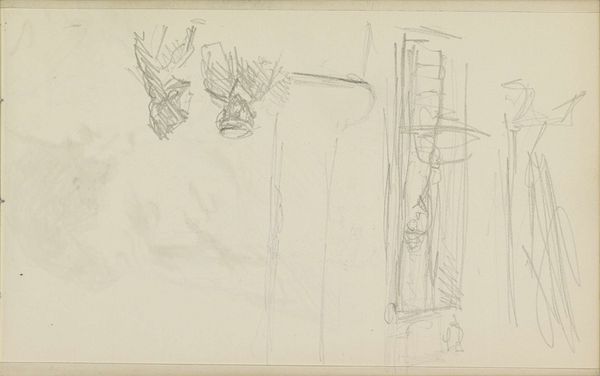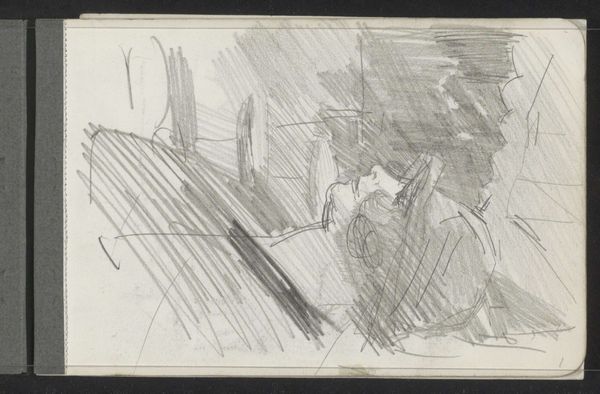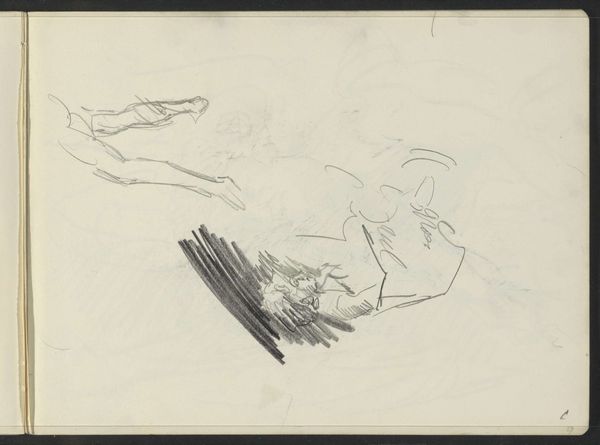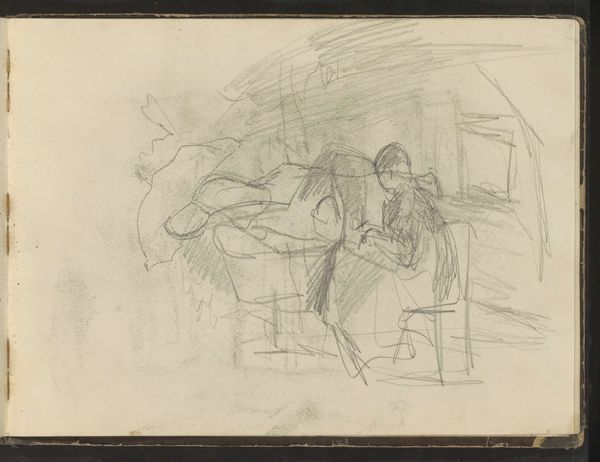
Copyright: Rijks Museum: Open Domain
Editor: This is "Man on a chair and standing women," a pen and pencil sketch by Isaac Israels, from around 1915 to 1925. It has a raw, unfinished quality, like a fleeting glimpse captured on paper. What catches your eye about this piece? Curator: What strikes me immediately is the overt display of labor involved in its creation. Israels presents the unvarnished reality of the artist's hand – the immediate mark-making process. Consider the very act of drawing at that time: mass-produced paper and pencils becoming increasingly accessible. This reflects the democratization of art production and consumption in the early 20th century. Editor: So, you’re saying the *making* of this work is as important as the subject matter itself? Curator: Absolutely. The hasty lines and visible corrections draw attention to the physical act of creating an image. Instead of obscuring the process, Israels embraces it, foregrounding the labour involved in image-making. What does that say about the role of craftsmanship, about artistic skill becoming less revered or, at least, re-evaluated in a world of emerging mass production? Editor: That’s interesting. I hadn't considered how readily available materials impacted artistic expression. Curator: It’s all interconnected. Cheaper materials change access, which changes artistic choice and style. In fact, consider the pose of the man in the chair. The loose sketch of a resting man, juxtaposed with what could be an abstract rendition of standing woman perhaps implies a discourse of labor between them; perhaps the figures are prostitutes or entertainers with the male patron. Editor: It's fascinating how considering the material context shifts the whole perspective. I definitely have a different view of the artwork now. Curator: Indeed! By focusing on materiality, we reveal a social and historical context of production. We move beyond simply viewing the 'Man on a Chair' and confront questions about labor, class, and artistic production in Israels’ time.
Comments
No comments
Be the first to comment and join the conversation on the ultimate creative platform.
